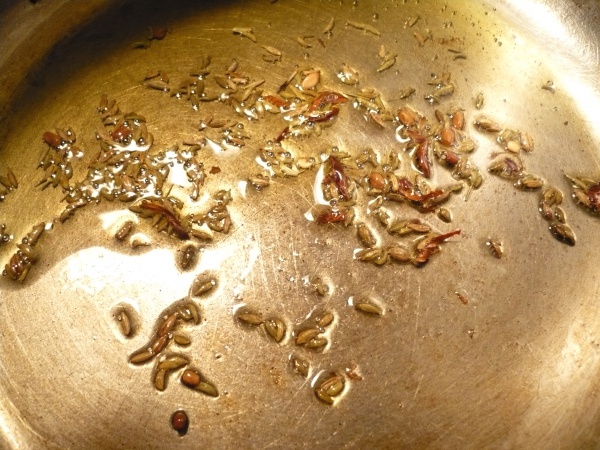Facts About Chaunk
Tempering is a traditional cooking technique prevalent in South Asian cuisines, including those of India, Nepal, Pakistan, Bangladesh, and Sri Lanka. This method entails briefly roasting whole spices in oil or ghee to release their essential oils, thereby enhancing the dish's flavors. Occasionally, the process also involves dry roasting spices before grinding them. Typically, tempering is performed either at the onset of cooking to infuse the oil with the spices' flavors or added at the end, just before serving.
Common spices used in tempering include cumin seeds, mustard seeds, fennel seeds, chilis, fenugreek seeds, asafoetida, cloves, curry leaves, onions, and garlic. These ingredients are generally added in a specific sequence, beginning with those that require a longer cooking time. In Oriya and Bengali cuisines, a special blend of spices known as panch phutana or panch phoron is often employed for tempering.
This technique is known by various names depending on the region and language. In Tamil, it is called 'thaalippu,' while in Telugu, it is referred to as 'thalimpu' or 'popu.' Bengalis might use terms such as 'torka,' 'bagar,' or 'phoron.' In Punjabi, it is known as 'tarka,' in Hindi as 'chaunk,' in Kannada as 'oggaraṇe,' in Gujarati as 'vaghaar,' in Marathi as 'phodni,' in Urdu as 'baghaar,' and in Oriya as 'baghaara' or 'chhunka.'
The Hindi term 'chhaunk' is believed to be onomatopoeic, imitating the sizzling sound of spices frying. In Bengali, 'bagar dewa' means "to temper" with 'bagar' denoting the act of tempering and 'dewa' meaning to give, thus translating to "to give temperance to."

 India
India